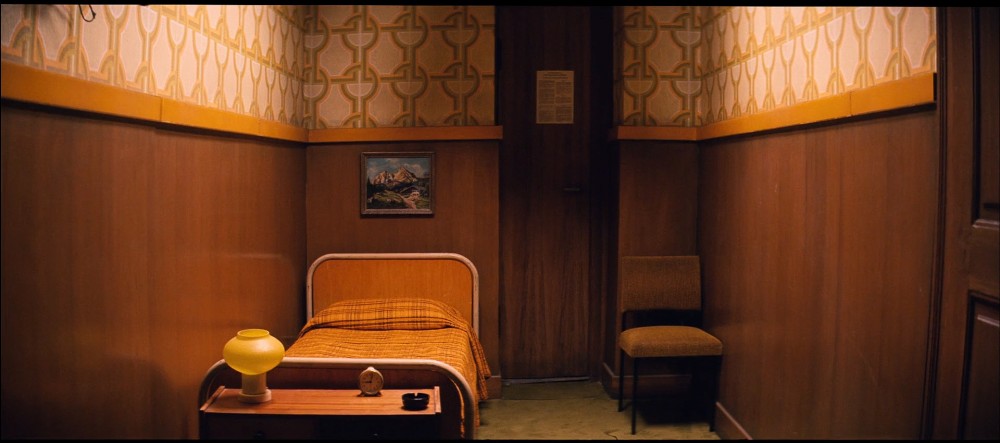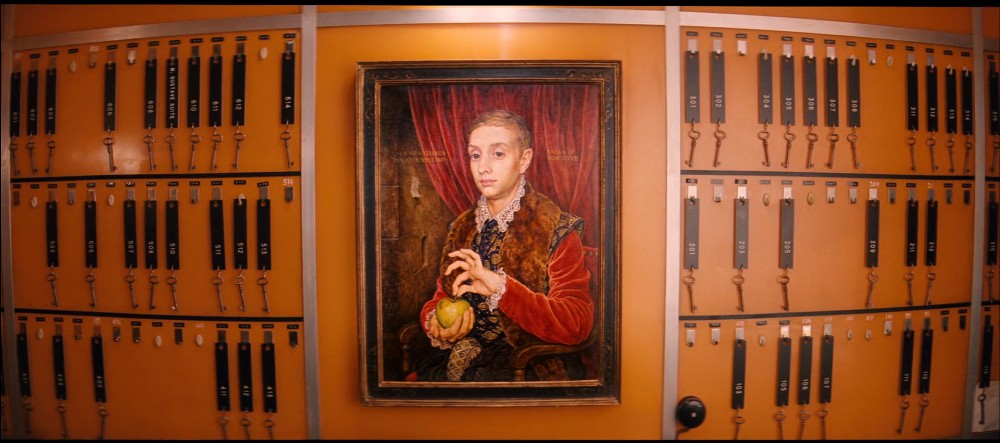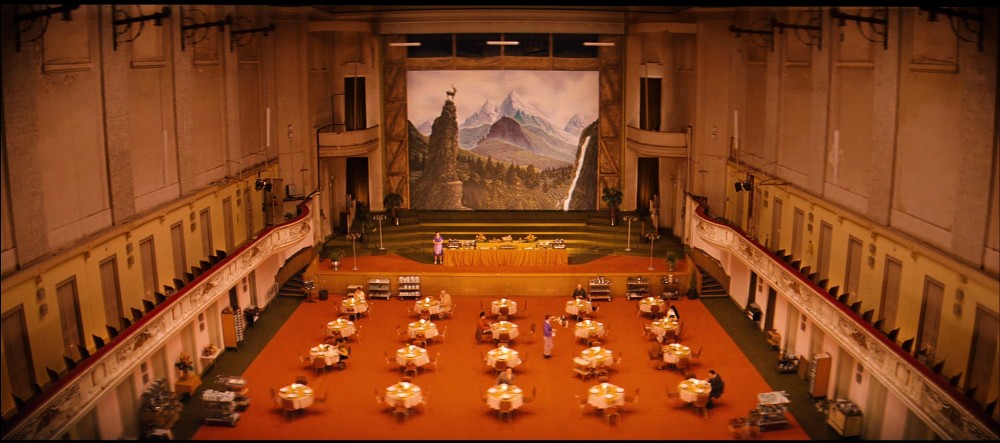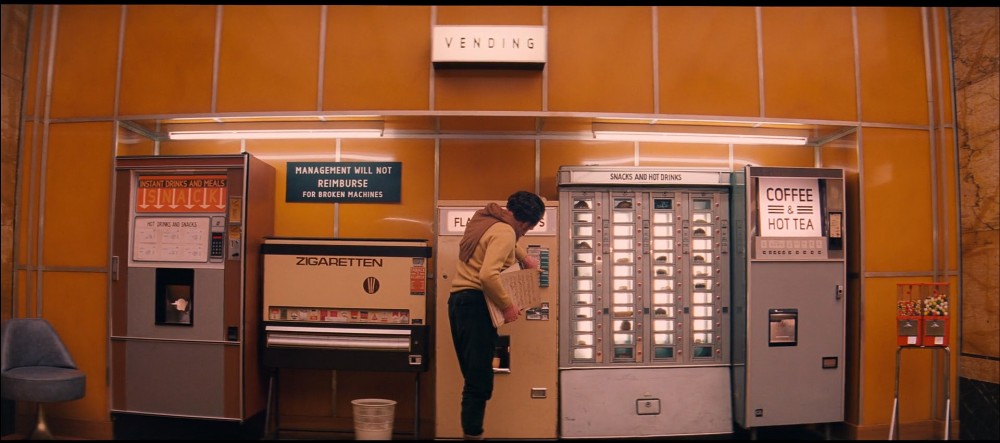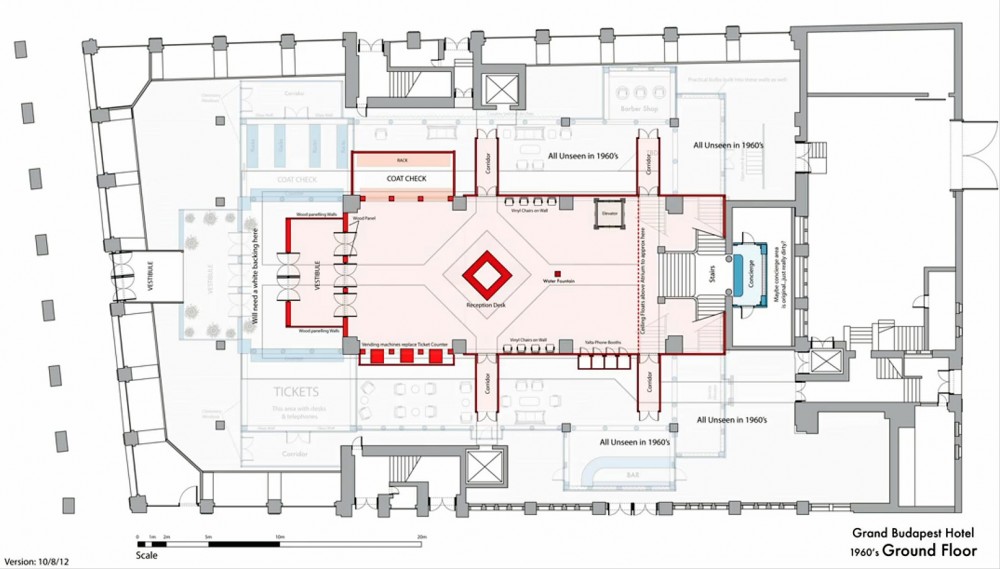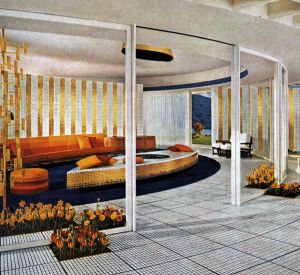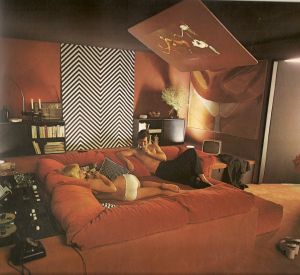The Grand Budapest Hotel in the 1960s
In Wes Anderson’s latest masterpiece we embark on a journey into the last gasps of the aristocratic life and haute couture of eastern Europe in the late 1920s. This is not just a story of a eccentric Hotelier and his lobby-boy, but a journey into Anderson’s mind, including his trademark symmetrical design and perfected color schemes.
The story of the Grand Budapest Hotel is set over three different decades, each with its own unique style, colors and film aspect ratio. In the centre, is the magnificent hotel itself, a Art Nouveau designed pink (later orange) palace containing every creature comforts a gentle-person could possible desire.
Standing in for the Grand Budapest Hotel is an abandoned department store in Görlitz, Germany called Görlitzer Warenhaus. The crew found the location while scouting for the movie and promptly fell in love with its unique, historical architecture, grand staircases and open floor plan. It was built circa 1912 as department store and functioned as that until 2009, when it was deemed no longer profitable. There are however plans to restore it back as a department store, which according to Wikipedia is set to happen sometime in 2016.
For the scenes in the lobby of the Grand Budapest Hotel, the old department store doubled up for two decades. The production designer Adam Stockhausen and his team built two complete sets in the atrium (diagrams at the bottom), where the lobby of the Hotel was erected. One for the 1920s timeline and another for the shots taking place in 1968 after the hotel is drastically changed to match the somewhat gloomy post-WWII eastern European architecture and design.
They way they achieved this is that they first built the set for the 1920s version and then wrapped the smaller 1960s version inside it. When filming was completed for this decade, they simply peeled away the layers no longer needed, revealing a large, grandiose and visually impressive set, restoring the Grand Budapest Hotel to its full splendor.
Anderson credits the Library of Congress’s Photochrome Prints Collection from the 1920s and ’30s as a huge inspiration for the movie. The production team designed the sets with ideas from these prints and from various historic landmarks across Eastern Europe. Inspirations for set designs also came from spas and hotels in Germany and the Czech Republic.
Below are a bunch of images from the 1968 version of the Grand Budapest Hotel which displays the ultra symmetrical full-on orange and brown colored version of the lobby, complete with impersonal vending machines, over-usage of signage and a very tired receptionist.
Above: Signage were often overused in the 60s and often creating more confusion than helpfulness — Courtesy Fox Searchlight
Above: Zero’s tiny bedroom of the Grand Budapest Hotel
Above: The lobby of the Grand Budapest Hotel during its decline in the 1960s
Above: Note the distinctive symmetry in design, a Wes Anderson trademark
Above: The lobby of the Grand Budapest Hotel during its decline in the 1960s
Above: The restaurant of the Grand Budapest Hotel during its decline in the 1960s
Above: The lobby of the Grand Budapest Hotel during its decline in the 1960s
Above: Vending machines were popular in the 1960s and of course also installed in the Grand Budapest Hotel
Above: The post-WWII entrance of the Grand Budapest Hotel
Above: The post-WWII exterior of the Grand Budapest Hotel
Above: A digram of the 1920s version of the set for the Grand Budapest Hotel
Above: A digram of the 1960s version of the set for the Grand Budapest Hotel




